Themed collection Introducing the Reaction Chemistry & Engineering Associate Editors

Reaction Chemistry & Engineering Emerging Investigators 2017
Reaction Chemistry & Engineering Editorial Board Chair Klavs Jensen and Scientific Editors Saif Khan and Ian Baxendale introduce the 2017 Emerging Investigators issue.

React. Chem. Eng., 2017,2, 99-102
https://doi.org/10.1039/C7RE90005H
Current and future role of Haber–Bosch ammonia in a carbon-free energy landscape
The future of green ammonia as long-term energy storage relies on the replacement of the conventional CO2 intensive methane-fed Haber–Bosch process by distributed and agile ones aligned to the geographically isolated and intermittent renewable energy.

Energy Environ. Sci., 2020,13, 331-344
https://doi.org/10.1039/C9EE02873K
Cloud-inspired multiple scattering for light intensified photochemical flow reactors
A novel photoflow reactor that mimics how nature accelerates photochemistry in the clouds.

React. Chem. Eng., 2020,5, 1058-1063
https://doi.org/10.1039/D0RE00080A
Enhancing interfacial contact in all solid state batteries with a cathode-supported solid electrolyte membrane framework
A cathode-supported solid electrolyte membrane framework with enhanced interfacial contact can significantly improve the electrochemical performance of all solid state batteries.
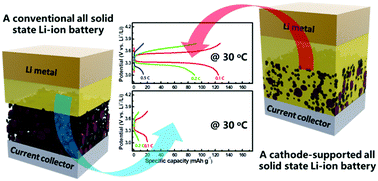
Energy Environ. Sci., 2019,12, 938-944
https://doi.org/10.1039/C8EE02617C
A solid-supported arylboronic acid catalyst for direct amidation
An efficient heterogeneous amidation catalyst has been prepared by co-polymerisation of styrene, DVB with 4-styreneboronic acid, which shows wide substrate applicability and higher reactivity than the equivalent homogeneous phenylboronic acid, suggesting potential cooperative catalytic effects.

Chem. Commun., 2019,55, 2916-2919
https://doi.org/10.1039/C8CC09913H
Continuous low temperature synthesis of MAPbX3 perovskite nanocrystals in a flow reactor
Perovskite nanocrystals prepared at room temperature using a simple flow reactor.
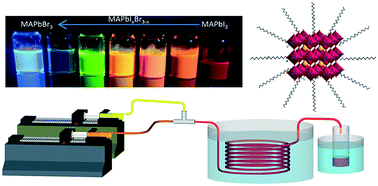
React. Chem. Eng., 2018,3, 640-644
https://doi.org/10.1039/C8RE00098K
Confined heat treatment of a Prussian blue analogue for enhanced electrocatalytic oxygen evolution
A simple and feasible in situ synthesis and surface optimization strategy to enable the Ni-based Prussian blue analogue (NiFeII-PBA) with excellent electrocatalytic oxygen evolution performance by boosting its electron transport and the exposure of active sites.
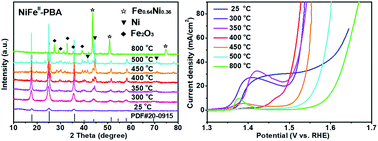
J. Mater. Chem. A, 2018,6, 15942-15946
https://doi.org/10.1039/C8TA05677C
Robust, non-fouling liters-per-day flow synthesis of ultra-small catalytically active metal nanoparticles in a single-channel reactor
Robust, non-fouling, litres-per-day continuous synthesis of catalytically active palladium nanoparticles using triphasic segmented flow in a hybrid milli-meso flow reactor.
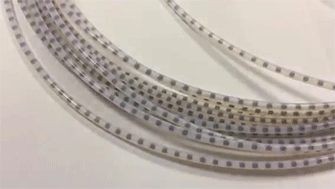
React. Chem. Eng., 2017,2, 636-641
https://doi.org/10.1039/C7RE00072C
Hierarchical NiCo2O4 nanosheets on carbon nanofiber films for high energy density and long-life Li–O2 batteries
An efficiently catalytic, lightweight, and binder-free cathode with hierarchical NiCo2O4 nanosheets grown on carbon nanofibers is rationally designed and synthesized.
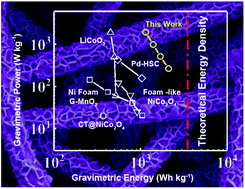
J. Mater. Chem. A, 2017,5, 14530-14536
https://doi.org/10.1039/C7TA03703A
A high strength, free-standing cathode constructed by regulating graphitization and the pore structure in nitrogen-doped carbon nanofibers for flexible lithium–sulfur batteries
A high strength, flexible cathode was designed for Li–S batteries by introducing graphitic carbon and hierarchical pores in carbon nanofibers.
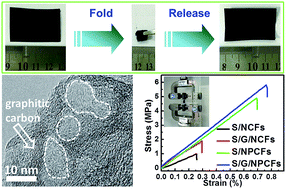
J. Mater. Chem. A, 2017,5, 6832-6839
https://doi.org/10.1039/C7TA01171G
Introduction of metal precursors by electrodeposition for the in situ growth of metal–organic framework membranes on porous metal substrates
An efficient and generalizable strategy assisted by electrodeposition was developed for the in situ growth of various MOF membranes.

J. Mater. Chem. A, 2017,5, 1948-1951
https://doi.org/10.1039/C6TA09469D
XAS investigation of silica aerogel supported cobalt rhenium catalysts for ammonia decomposition
In situ XAS applied to a silica supported CoRe catalyst for ammonia decomposition shows the importance of the reduced bimetallic phase.

Phys. Chem. Chem. Phys., 2020,22, 18932-18949
https://doi.org/10.1039/D0CP00558D
In situ coupling of CoP with MoO2 for enhanced hydrogen evolution
The development of highly active and stable catalysts based on low-cost materials for the hydrogen evolution reaction (HER) is crucial to catalytic water splitting.
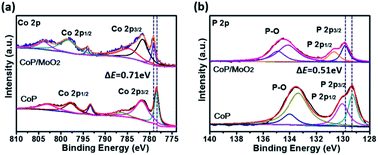
J. Mater. Chem. A, 2020,8, 16018-16023
https://doi.org/10.1039/D0TA03736B
Continuous manufacturing of silver nanoparticles between 5 and 80 nm with rapid online optical size and shape evaluation
Flexible manufacturing technology of nanoparticles with sizes between 5 and 80 nm. This unique size flexibility is enabled by coupling rapid online spectroscopy and a mathematical Mie theory-based algorithm for size and shape evaluation.
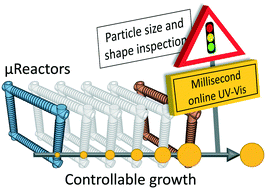
React. Chem. Eng., 2020,5, 342-355
https://doi.org/10.1039/C9RE00452A
Mechanistic insights of the reduction of gold salts in the Turkevich protocol
The Turkevich protocol consists of two consecutive reduction steps (Au3+ → Au+ → Au0) rather than a reduction followed by the disproportionation reaction as conventionally believed. The second reduction is the rate-limiting step.
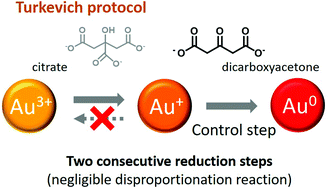
Nanoscale, 2020,12, 2740-2751
https://doi.org/10.1039/C9NR08877F
Mesoscale triphasic flow reactors for metal catalyzed gas–liquid reactions
Design and operation of a mesoscale triphasic reactor for flow hydrogenations, capable of delivering kg per day productivity from a single channel.

React. Chem. Eng., 2019,4, 1331-1340
https://doi.org/10.1039/C9RE00150F
Facile synthesis of lanthanide doped yttria nanophosphors by a simple microplasma-assisted process
An environmentally friendly microplasma-based method is applied to produce crystalline lanthanide doped nanophosphors of controllable photoluminescence properties.
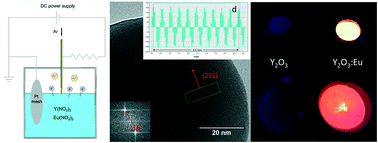
React. Chem. Eng., 2019,4, 891-898
https://doi.org/10.1039/C8RE00357B
Highly efficient CO2 capture by mixed matrix membranes containing three-dimensional covalent organic framework fillers
A three-dimensional covalent organic framework filler with size-selective pores has been proven effective in boosting the membrane CO2 capture performance.
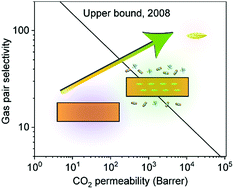
J. Mater. Chem. A, 2019,7, 4549-4560
https://doi.org/10.1039/C8TA10333J
Oxidant free conversion of alcohols to nitriles over Ni-based catalysts
Ni-Based catalysts converting various primary alcohols to nitriles in high yields under oxidant-free, low temperature conditions.
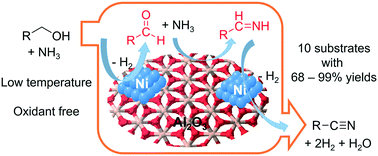
Catal. Sci. Technol., 2019,9, 86-96
https://doi.org/10.1039/C8CY01799A
Flow synthesis of coumalic acid and its derivatization
Coumalic acid is a valuable platform compound which can be prepared from malic acid, a biorenewable feedstock derived from glucose. Two flow syntheses of coumalic acid and a new heated rotating reactor are presented.

React. Chem. Eng., 2018,3, 722-732
https://doi.org/10.1039/C8RE00116B
Continuous synthesis of hollow silver–palladium nanoparticles for catalytic applications
Hollow bimetallic nanoparticles exhibit unique surface plasmonic properties, enhanced catalytic activities and high photo-thermal conversion efficiencies amongst other properties, however, their research and further deployment are currently limited by their complicated multi-step syntheses.
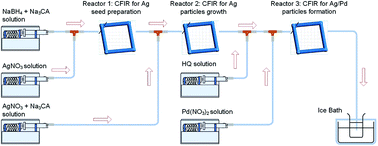
Faraday Discuss., 2018,208, 427-441
https://doi.org/10.1039/C8FD00001H
Selective gas diffusion in two-dimensional MXene lamellar membranes: insights from molecular dynamics simulations
The selective gas diffusion in MXene membranes was explored via molecular simulations, yielding insights for developing highly efficient gas separation membranes.

J. Mater. Chem. A, 2018,6, 11734-11742
https://doi.org/10.1039/C8TA03701A
Continuous synthesis of tuneable sized silver nanoparticles via a tandem seed-mediated method in coiled flow inverter reactors
Size control of metal nanoparticles is essential to achieve accurate adjustment of their unique chemical and physical properties.
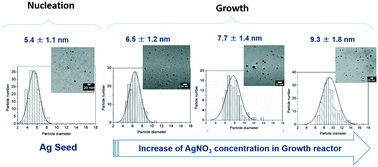
React. Chem. Eng., 2018,3, 267-276
https://doi.org/10.1039/C7RE00194K
Electrically controlled mass transport into microfluidic droplets from nanodroplet carriers with application in controlled nanoparticle flow synthesis
Infuse chemical into microdroplets from nanodroplet carriers with rates and dosages controlled by electrical fields, and applications in nanoparticle synthesis.
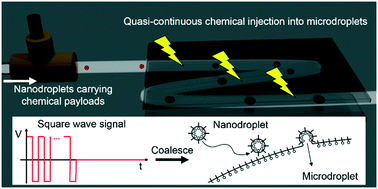
Lab Chip, 2018,18, 1330-1340
https://doi.org/10.1039/C8LC00114F
Embedding liquid lasers within or around aqueous microfluidic droplets
We demonstrate the incorporation of dye-based liquid lasers within or around flowing aqueous microfluidic droplets, which make them capable of on drop optofluidic sensing.
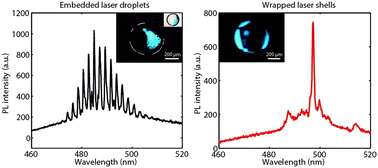
Lab Chip, 2018,18, 197-205
https://doi.org/10.1039/C7LC00701A
Tuning the separation performance of hydrogen permeable membranes using an anion doping strategy
Fluoride-anion doping is first reported for tuning the separation performance of mixed protonic-electronic conducting (MPEC) membranes, and enhanced hydrogen permeability was observed with appropriate introduction of the fluoride ions.

J. Mater. Chem. A, 2017,5, 20482-20490
https://doi.org/10.1039/C7TA06030K
Continuous flow synthesis of poly(acrylic acid) via free radical polymerisation
The free radical polymerisation of aqueous solutions of acrylic acid (1) has been studied using a continuous flow reactor to quickly screen reaction parameters such as temperature, residence time, monomer- and initiator concentration.
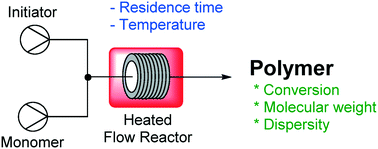
React. Chem. Eng., 2017,2, 662-668
https://doi.org/10.1039/C7RE00063D
Purification of poly(acrylic acid) using a membrane ultra-filtration unit in flow
We have developed methodology to synthesise aqueous soluble polymers such as poly(acrylic acid) in flow, enabling access to a variety of molecular weights.

React. Chem. Eng., 2017,2, 656-661
https://doi.org/10.1039/C7RE00080D
Low temperature total oxidation of toluene by bimetallic Au–Ir catalysts
Intimate contact between gold and iridium nanoparticles supported on TiO2 provides a synergetic effect leading to low temperature VOC oxidation activity.
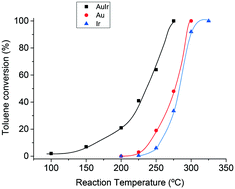
Catal. Sci. Technol., 2017,7, 2886-2896
https://doi.org/10.1039/C7CY00635G
γ-Al2O3 nanorods with tuneable dimensions – a mechanistic understanding of their hydrothermal synthesis
This paper reports mechanistic understanding of the hydrothermal synthesis of alumina (γ-Al2O3) nanorods, presenting an economic and reproducible route for their manufacture with tuneable sizes for a wide range of applications.
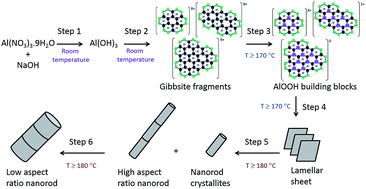
RSC Adv., 2017,7, 22369-22377
https://doi.org/10.1039/C7RA02590D
Synthesis of narrow sized silver nanoparticles in the absence of capping ligands in helical microreactors
Microtubular helical reactors generate secondary flows promoting the synthesis of mono-sized silver nanoparticles in the absence of capping ligands.

React. Chem. Eng., 2017,2, 116-128
https://doi.org/10.1039/C6RE00202A
Theory of hot electrons: general discussion
Faraday Discuss., 2019,214, 245-281
https://doi.org/10.1039/C9FD90012H
Dynamics of hot electron generation in metallic nanostructures: general discussion
Faraday Discuss., 2019,214, 123-146
https://doi.org/10.1039/C9FD90011J
Applications in catalysis, photochemistry, and photodetection: general discussion
Faraday Discuss., 2019,214, 479-499
https://doi.org/10.1039/C9FD90014D
The challenges of characterising nanoparticulate catalysts: general discussion
Faraday Discuss., 2018,208, 339-394
https://doi.org/10.1039/C8FD90014K
Theory as a driving force to understand reactions on nanoparticles: general discussion
Faraday Discuss., 2018,208, 147-185
https://doi.org/10.1039/C8FD90013B
Control of catalytic nanoparticle synthesis: general discussion
Faraday Discuss., 2018,208, 471-495
https://doi.org/10.1039/C8FD90015A
Direct visualization of the ouzo zone through aggregation-induced dye emission for the synthesis of highly monodispersed polymeric nanoparticles
We report a new enhanced solvent displacement method for the synthesis of highly monodisperse nanoparticles with direct visualization of the ouzo zone.
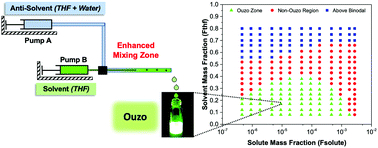
Mater. Chem. Front., 2019,3, 1375-1384
https://doi.org/10.1039/C9QM00020H
Highlights from Faraday Discussion on Designing Nanoparticle Systems for Catalysis, London, UK, May 2018
The 2018 Faraday Discussion on “Designing Nanoparticle Systems for Catalysis” brought together leading scientists to discuss the current state-of-the-art in the fields of computational chemistry, characterization techniques, and nanomaterial synthesis, and to debate the challenges and opportunities going forward for rational catalyst design.
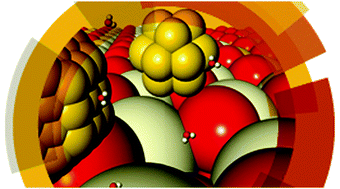
Chem. Commun., 2018,54, 9385-9393
https://doi.org/10.1039/C8CC90324G
Correction: Direct visualization of the ouzo zone through aggregation-induced dye emission for the synthesis of highly monodispersed polymeric nanoparticles
Mater. Chem. Front., 2019,3, 2530-2530
https://doi.org/10.1039/C9QM90044F